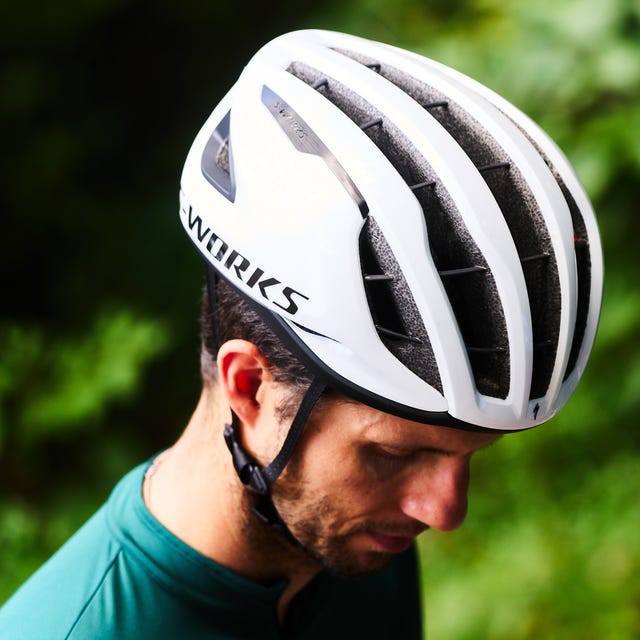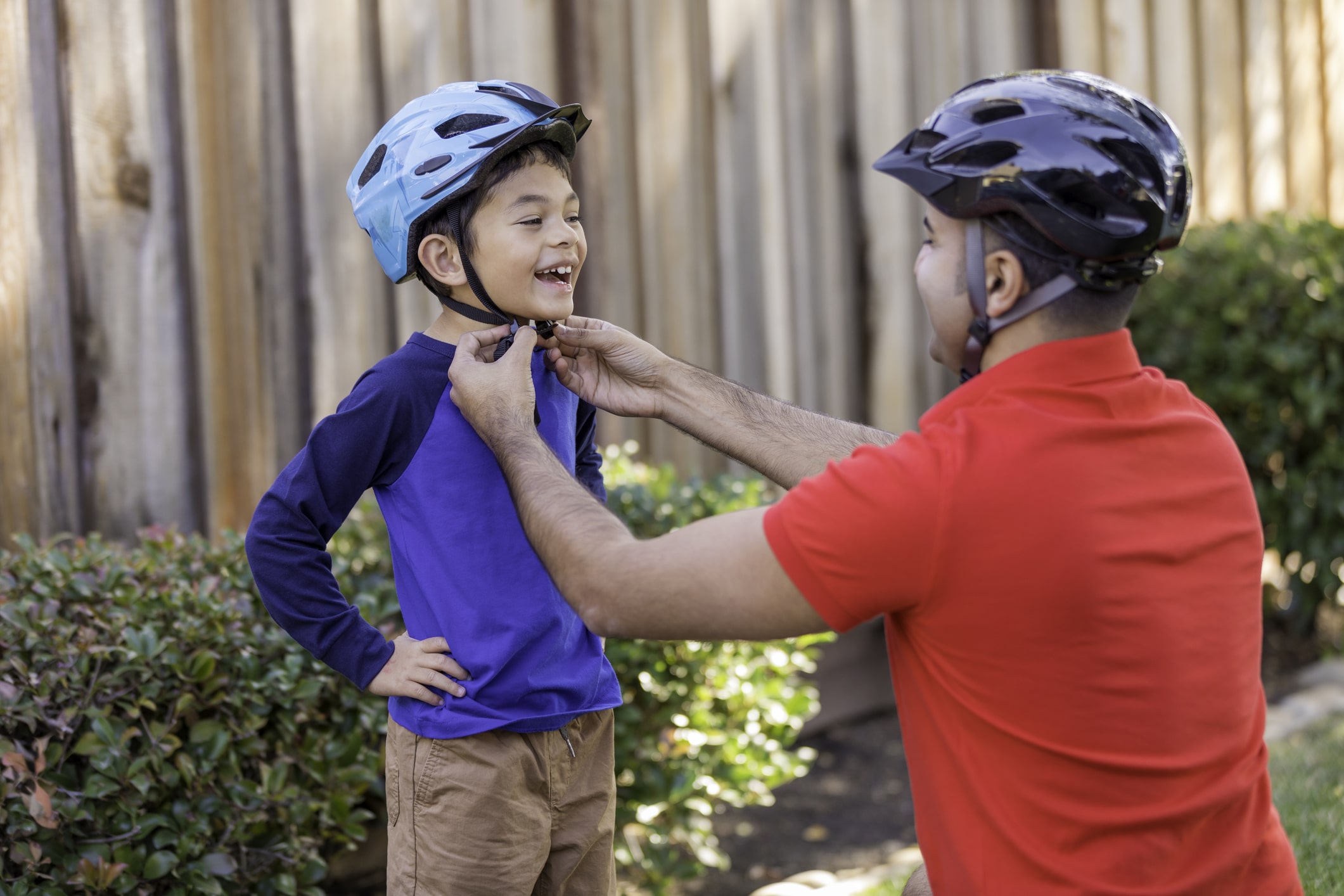The Importance of Proper Helmet Fitting
When it comes to learning how to wear a bike helmet, proper fitting is a crucial aspect to master. A helmet that fits poorly can compromise its ability to protect the rider’s head in the event of an accident, making it a critical aspect of safe cycling. In fact, a study by the National Highway Traffic Safety Administration found that helmets that fit improperly are a leading cause of head injuries in cycling accidents.
A helmet that is too loose or too tight can lead to a range of problems, including reduced visibility, discomfort, and even skin irritation. Moreover, a poorly fitting helmet can also affect the rider’s confidence and comfort level, making them more prone to accidents. On the other hand, a helmet that fits snugly and comfortably can provide a sense of security and freedom, allowing riders to focus on their ride.
To ensure a proper fit, riders should look for a helmet that sits level on the head, with the straps forming a “V” shape around the ears. The helmet should also be snug but not too tight, with enough room to fit two fingers between the helmet and the forehead. By taking the time to find a helmet that fits properly, riders can enjoy a safer and more enjoyable ride, and master the art of how to wear a bike helmet.
Choosing the Right Helmet for Your Ride
When it comes to learning how to wear a bike helmet, selecting the right helmet for your specific needs is crucial. With various types of bike helmets available, riders can choose from road, mountain, and commuter helmets, each designed to cater to different riding styles and environments.
Road helmets are designed for speed and aerodynamics, making them ideal for competitive cyclists and riders who frequent smooth roads. Mountain helmets, on the other hand, offer additional protection and features such as visors and adjustable ventilation, making them perfect for off-road adventures. Commuter helmets, designed for daily commuting, often feature additional safety features such as reflective strips and adjustable fit systems.
To choose the right helmet, riders should consider factors such as their riding style, the terrain they’ll be riding on, and their personal preferences. For example, riders who frequent rough terrain may prefer a mountain helmet, while those who ride in low-light conditions may opt for a commuter helmet with reflective features. By selecting a helmet that meets their specific needs, riders can ensure a safe and comfortable ride, and master the art of how to wear a bike helmet.
How to Put on a Bike Helmet Correctly
Learning how to wear a bike helmet correctly is a crucial aspect of safe cycling. A helmet that is not worn properly can compromise its ability to protect the rider’s head in the event of an accident. To ensure a safe and comfortable ride, follow these step-by-step instructions on how to put on a bike helmet.
First, hold the helmet with both hands and place it on your head, making sure it sits level and not tilted back or forward. Next, adjust the straps by pulling them out of the helmet and placing them behind your ears. The straps should form a “V” shape around your ears, with the buckle centered under your chin.
Adjust the fit of the helmet by tightening or loosening the straps and buckles. The helmet should fit snugly but not too tightly, with enough room to fit two fingers between the helmet and your forehead. Finally, check the helmet’s position by looking in a mirror or asking a friend to ensure it is properly aligned.
By following these simple steps, riders can ensure they are wearing their bike helmet correctly and mastering the art of how to wear a bike helmet. Remember, a properly worn helmet is essential for safe and enjoyable cycling.
The Role of Helmet Certification in Ensuring Safety
Helmets that meet certain safety standards and regulations play a critical role in ensuring the safety of cyclists. When learning how to wear a bike helmet, it’s essential to understand the importance of helmet certification. In the United States, for example, the Consumer Product Safety Commission (CPSC) sets standards for bike helmet safety, while in Europe, the European Committee for Standardization (CEN) sets similar standards.
Helmet certification involves testing helmets to ensure they meet specific safety requirements, such as impact resistance, penetration resistance, and retention system strength. Look for helmets that carry certifications from reputable organizations, such as the CPSC, CEN, or Snell Memorial Foundation. These certifications guarantee that the helmet has undergone rigorous testing and meets the necessary safety standards.
When purchasing a helmet, riders should check for the certification label or sticker, which indicates that the helmet meets the required safety standards. Additionally, riders should research the manufacturer’s reputation and read reviews to ensure they are purchasing a high-quality helmet that meets their specific needs. By choosing a certified helmet, riders can have confidence in their safety gear and master the art of how to wear a bike helmet.
Common Mistakes to Avoid When Wearing a Bike Helmet
While learning how to wear a bike helmet is crucial, it’s equally important to avoid common mistakes that can compromise safety. One of the most critical mistakes is wearing a worn or damaged helmet. Helmets that are past their expiration date or have been involved in a crash should be replaced immediately. Additionally, riders should inspect their helmets regularly for signs of damage, such as cracks, dents, or worn-out padding.
Another common mistake is failing to adjust the helmet properly. A helmet that is not adjusted correctly can shift during a crash, leaving the rider’s head vulnerable to injury. Riders should ensure that the helmet fits snugly and that the straps are adjusted to form a “V” shape around the ears. The buckle should be centered under the chin, and the helmet should not be tilted back or forward.
Riders should also avoid wearing a helmet that is too loose or too tight. A helmet that is too loose can come off during a crash, while a helmet that is too tight can cause discomfort and distraction. Furthermore, riders should avoid wearing a helmet with loose or damaged straps, as this can compromise the helmet’s ability to stay in place during a crash.
By being aware of these common mistakes and taking steps to avoid them, riders can ensure that they are wearing their bike helmet correctly and safely. Remember, mastering the art of how to wear a bike helmet is essential for safe and enjoyable cycling.
Wearing a Bike Helmet with Other Safety Gear
When learning how to wear a bike helmet, it’s essential to remember that a helmet is just one part of a comprehensive safety strategy. Wearing a bike helmet in conjunction with other safety gear can significantly reduce the risk of injury or death in the event of a crash. Knee pads, elbow pads, and reflective clothing are all important components of a cyclist’s safety arsenal.
Knee pads and elbow pads provide additional protection for vulnerable joints in the event of a crash. These pads can help reduce the severity of injuries and prevent long-term damage. Reflective clothing, such as arm and leg bands, can increase visibility in low-light conditions, making it easier for motorists to see cyclists on the road.
When choosing safety gear, riders should look for products that meet safety standards and regulations. For example, knee pads and elbow pads should meet the standards set by organizations such as the American Society for Testing and Materials (ASTM) or the Snell Memorial Foundation. Reflective clothing should meet the standards set by organizations such as the International Organization for Standardization (ISO).
By wearing a bike helmet in conjunction with other safety gear, riders can significantly reduce their risk of injury or death. Remember, mastering the art of how to wear a bike helmet is just one part of a comprehensive safety strategy. By combining a helmet with other safety gear, riders can enjoy safe and enjoyable cycling.
Tips for Wearing a Bike Helmet in Different Weather Conditions
When learning how to wear a bike helmet, it’s essential to consider the various weather conditions that can affect the safety and comfort of your ride. Whether you’re cycling in the rain, snow, or extreme temperatures, wearing a bike helmet is crucial for protecting your head from injury. Here are some tips for wearing a bike helmet in different weather conditions:
In the rain, it’s essential to wear a helmet with a visor or peak to help keep rain out of your eyes. Additionally, consider wearing a helmet with a waterproof coating to prevent water from seeping into the helmet. When cycling in the snow, wear a helmet with a warm and breathable liner to keep your head warm and dry. In extreme temperatures, wear a helmet with ventilation to help keep your head cool.
It’s also important to consider the road conditions in different weather. For example, in the rain, roads may be slippery, and in the snow, roads may be icy. Wearing a bike helmet can help protect your head in the event of a crash, but it’s also important to ride defensively and cautiously in hazardous weather conditions.
By following these tips and learning how to wear a bike helmet correctly, riders can enjoy safe and enjoyable cycling in any weather condition. Remember, a bike helmet is an essential piece of safety gear, and wearing it correctly can make all the difference in the event of a crash.
Conclusion: Wearing a Bike Helmet is a Must for Safe Cycling
In conclusion, wearing a bike helmet is a crucial aspect of safe cycling. By mastering the art of how to wear a bike helmet, riders can significantly reduce their risk of injury or death in the event of a crash. From proper helmet fitting to choosing the right helmet for your ride, and from wearing a helmet with other safety gear to tips for wearing a helmet in different weather conditions, every detail counts.
By following the guidelines and tips outlined in this article, riders can ensure that they are wearing their bike helmet correctly and safely. Remember, a bike helmet is not just a piece of safety gear, it’s a lifesaver. Make wearing a bike helmet a habit, and enjoy safe and enjoyable cycling.
Whether you’re a seasoned cyclist or just starting out, learning how to wear a bike helmet is an essential part of your cycling journey. By prioritizing safety and taking the necessary precautions, riders can enjoy the many benefits of cycling while minimizing the risks. So, get out there and ride safely – wear a bike helmet and make it a habit!








